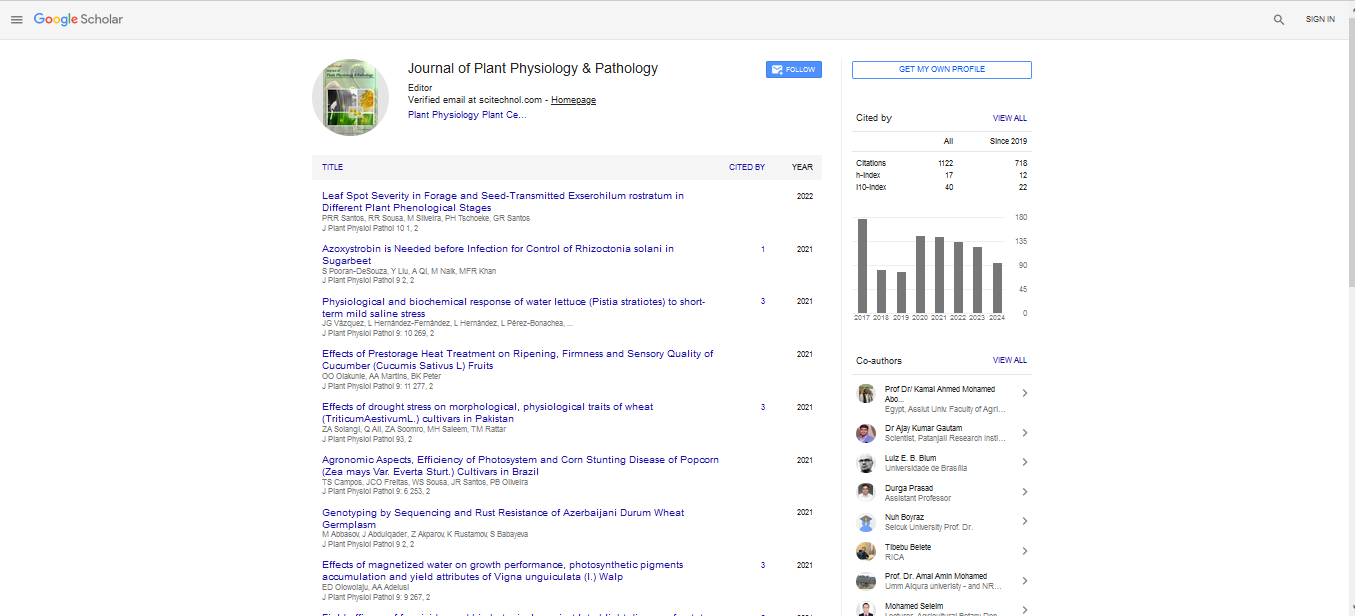Research Article, J Plant Physiol Pathol Vol: 9 Issue: 2
Biochemical Factors Imparting Resistance to Rust (Puccineapurpurea Cooke) of Sorghum
S.R. Zanjare1, Y.S. Balgude2* and Snehal S. Zanjare3
1Senior Scientist (Pathology), Seed Technology Research Unit, MPKV
2Senior Research Assistant (Pathology), Seed Technology Research Unit, MPKV
3Department of Plant Pathology and Agril. Microbiology, MPKV
- *Corresponding Author:
- Balgude YS
Senior Research Assistant (Pathology), Seed Technology Research Unit, MPKV, Rahuri Dist, India
Tel: 09890380654
E-mail: ysbalgude4u@gmail.com
Received Date: March 26, 2020; Accepted Date: February 03, 2021; Published Date: February 10, 2021
Citation: Zanjare SR, Balgude YS, Zanjare SS (2021) Biochemical Factors Imparting Resistance to Rust (Puccineapurpurea Cooke) of Sorghum. J Plant Physiol Pathol 9:2.
Copyright: © All articles published in Journal of Plant Physiology & Pathology are the property of SciTechnol, and is protected by copyright laws. Copyright © 2020, SciTechnol, All Rights Reserved.
Abstract
An experiment was conducted to study the different biochemical constituents imparting resistance and susceptibility to rust of sorghum disease caused by Puccineapurpurea Cooke. For this, fiverust resistant (R) and fiverust susceptible (S) genotypes of sorghum were inoculated at 30 days after sowing (DAS) and studied at both 30 days after inoculation (DAI). Reduction in the chlorophyll a, chlorophyll b, total chlorophyll, soluble protein, reducing sugar, non-reducing sugar, total sugar and phenol contents was found in inoculated S genotypes as compared with inoculated R genotypes. The total phenol content and enzymatic activities viz., peroxidase and polyphenol oxidase were decreased in R as well as S genotypes when challenged with sorghum rust, while increased levels of phenol, peroxidase and polyphenol oxidase activity were found more in R genotypes than S genotypes.
 Spanish
Spanish  Chinese
Chinese  Russian
Russian  German
German  French
French  Japanese
Japanese  Portuguese
Portuguese  Hindi
Hindi 
